You must be logged in to rate content!
9 minute(s) of a 280 minute read
4-25-2011
I have an old school Mazda "M" logo horn button (thanks, Rich) on my Nardi wheel. I liked the look so much that I decided to have a shift **** made to match the horn button. The guy (Landon) who is making shift ***** out of plastic or acrylic poly in the vendor classified sections is making it (them) for me. Anyway, here's the horn button and some photos of the new shift ***** before he puts on the "M" logo. I should have the finished ***** this afternoon and will put up some pictures of the finished ***** then. (Landon does beautiful work.)
Gordon
Here's the horn button...

4-25-2011
I changed the intake piping and filter location. Its still temporary, but I think it looks much better. So, this is it till later in the summer. Only thing is that I need to get a black K&N filter wrap.
Gordon
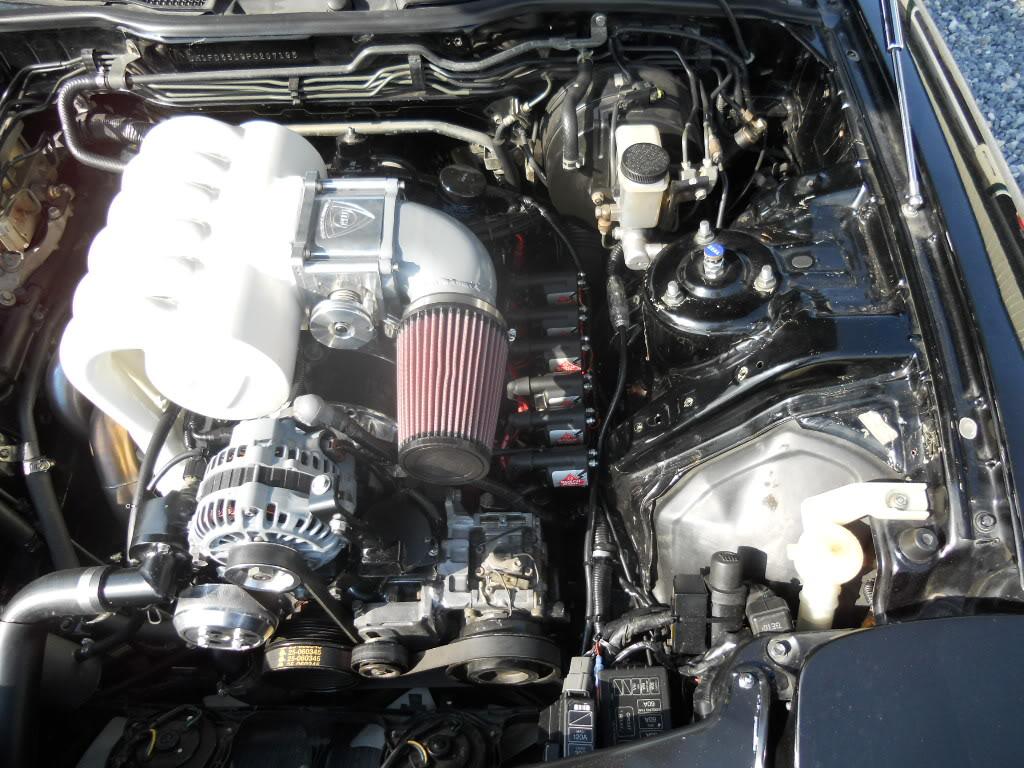

8-24-2011
Then, we rebuilt the engine, but, with me always trying to "improve" things, I decided to go back to the lighter 10:1 Rx8 rotors. We ported it a bit more as well. We got it back together with the new plenum and Logan's exhaust and put 600 miles on it. Then, we started dyno work. Immediately, it became clear that the 10:1 rotors were now a problem. The higher compression rotors interacted with the bigger plenum and created a pulse wave starting at about 6500 rpm that sounded like a pulsed wailing. The rapidly changing air velocity as a result meant you couldn't tune it at all over 6500.
So, I had the choice of rebuilding the motor (again) with the S5 9.6:1 rotors or taking the bigger plenum off and replacing it with the much smaller stock plenum for the time being. I didn't want to rebuild the motor again for no good reason, so I switched to the smaller plenum and, voila, no pulse waves. However, no air volume at high rpm either. The motor runs out of air at 7500 or so, but runs great up to that point. The lighter eshaft and rotors mean the motor revs an awful lot faster and it really runs beautifully from 0-7500.
However, we need to solve the intake problem. Again, I don't want to rebuild the motor and go back to the lower compression rotors. I think I was right initially that they are the better choice. So, we have ordered some 52 mm Jenvey throttle bodies and will be stuffing those in there in October. I really wanted to keep it simple with a big single throttle body and plenum, but this is really the more reasonable choice right now. It means I will get the maximum power possible from the motor without any air flow constriction, though it will be a little noisier. That's ok.
The last thing we are doing is installing the new exhaust. It was supposed to be done before the Carlisi meet, but Barninger has been so busy that it didn't happen. We have all the pieces and it shouldn't take much to get them on, but the programming will be a challenge. The exhaust consists of a reducer from 3-to-2.5 inches off the collector going into a 2.5 inch Y-pipe. The one side will go into a 2.5 inch exhaust straight back into the 2 mufflers. The other side of the Y has a Doug's Headers flat slide electronic cutout that goes into another 2.5 inch pipe that will have a single muffler on it. Both pipes will go back to the tail of the car. The programming issues are mostly the conditions under which the second pipe is closed off. The opening is pretty straightfoward and will happen based on rpm and pressure ahead of the Y-pipe, but not sure when it should close the second pipe once opened. So, there will be a little fiddling to get it right.
That's the update.
10-18-2011
Not a thing to report. Been having fun just driving. Waiting for my slot at Speed 1 for my winter work. Exhaust, itb's, and paint. Still thinking about 6 motorcycle itb's vs 3 automotive. Haven't spent enough time on research.
12-25-2012
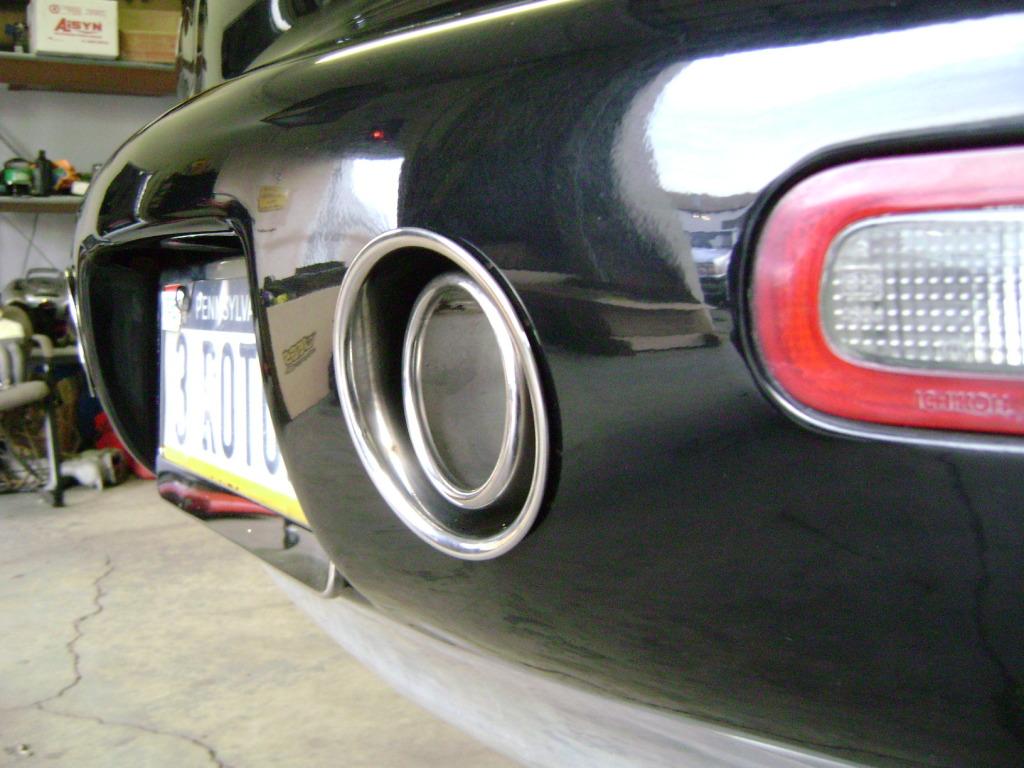
1-9-2013
Also designed the exhaust itself to improve torque across the rpm range, but we have no testing numbers. I use 2 pipes instead of 1 and run through the 1st pipe only at low rpm and then both at higher rpm. Faster exhaust gas velocity should add power to an NA motor. Wouldn't do much that way for a turbo motor, but it would be cool to set up an exhaust like this where the 1st pipe was a normal large pipe you would use (say, 3 inch) and then use the cutout direct to air out under the passenger side door. More power and great sound when cutout is open.
1-14-2013
We weighed the stainless muffler box, including tips and entry piping, and its 23 pounds. However we need to measure the entire bumper with box against a stock bumper, because we removed a good deal of the frame and other materials inside the bumper. So, we are pretty sure the net gain is less than 23 pounds. The dual exhaust box would work for a turbo car with a single pipe back to the in-bumper box or adding a cutout pipe and letting the owner bypass all resonators and mufflers and essentially run without an exhaust when its appropriate... ![]()
1-17-2013
As to weakening bumper structure such that the hot muffler box gets jammed into the gas tank and it does a Ford Pinto... Nope. I'll ask Logan to chime in with anything, but the design of the gas tank, steel rear bulkhead, and aluminum bumper -- as Mazda designed it -- makes any contact between the hot stainless box and the gas tank nearly impossible, though there is always an impact potential that would smash through whatever Mazda designed or what we did..
Remember that there is a steel bulkhead running the full width of the car and attached to the extremely beefy rear frame rails. There is about 4 inches of free air in between this steel bulkhead and the gas tank. So, first just considering the impact that would be required for the rear bulkhead to deform and be pushed in contact the gas tank, the impact would have to be really significant. Second, the stainless steel box, which is bolted to the aluminum bumper frame, itself serves as a crush zone. It will do the accordion thing and be flattened up against the rear bulkhead, thus absorbing a lot of the force.
(I would also note that Greddy has been selling front mount IC's for a long time and it virtually eliminates the usefulness of the front bumper. While there's no gas tank to consider, engine bay fires can occur. That has never stopped anyone from doing an FMIC.)
Again, I am not saying there are not issues to be considered, but I think we have thought about most of them in some depth. We are going to do some serious testing of pure heat issues. We are never going to do a rear impact test. So, we'll just have to wait for my first rear end collision. ![]()
1-18-2013
I'll add a bit more and maybe Logan will chime in. Essentially, our design exactly maintains the backend structure, as Mazda's engineer's designed it with the sole mechanical exception being where the pipe goes into the bumper. The middle of the bumper frame is now very hot, so that, if it ever did break and break through the steel bulkhead at the back of the car, you might well have a problem. However, I think any such rear end collision would be of such a large magnitude that any stock-mounted exhaust would experience nearly the same problem. Any additional comments would be appreciated, since these kinds of things are so important and, even though we are trying to consider everything, we don't want to miss something. ![]()
2-1-2013
We're making progress on the build. Should have some pictures soon.
Bought a set of the same 18 inch Speedline Corse's that came on my 94 Porsche. Wheel Collision Center painted the centers and polished them. Looking for tires. I've only had 17 inch wheels on the car and want to see what difference 18's make.
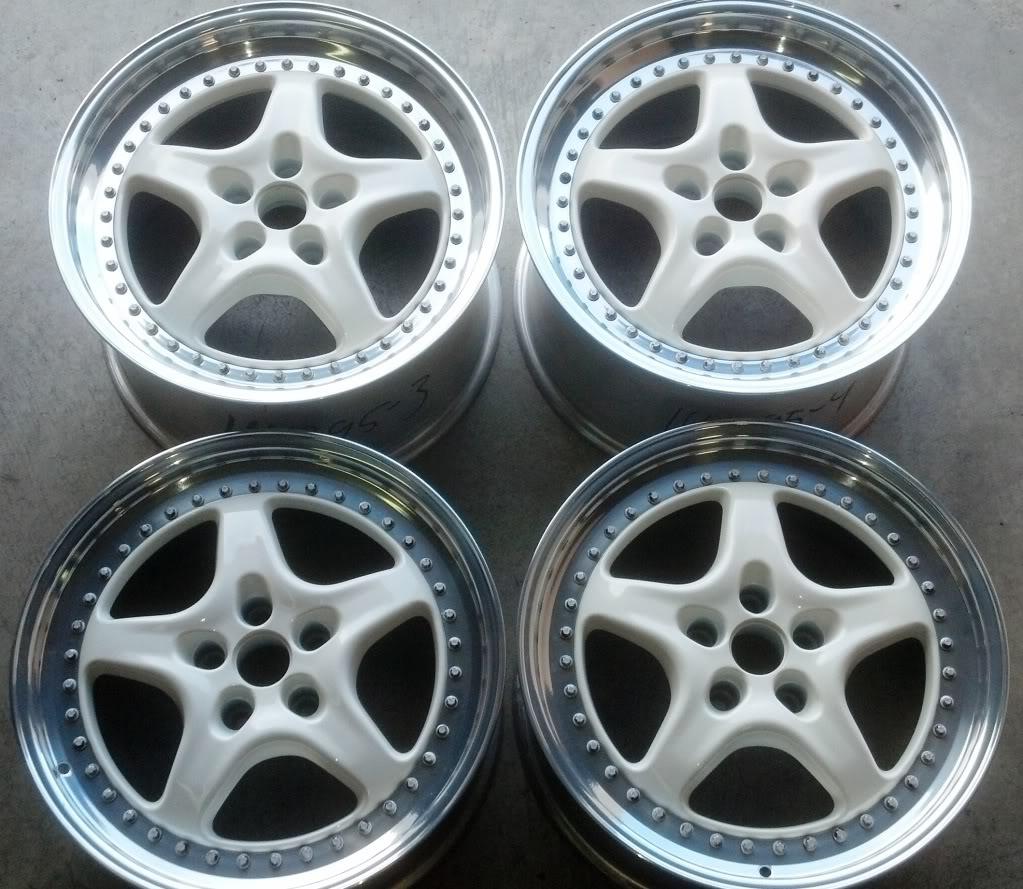
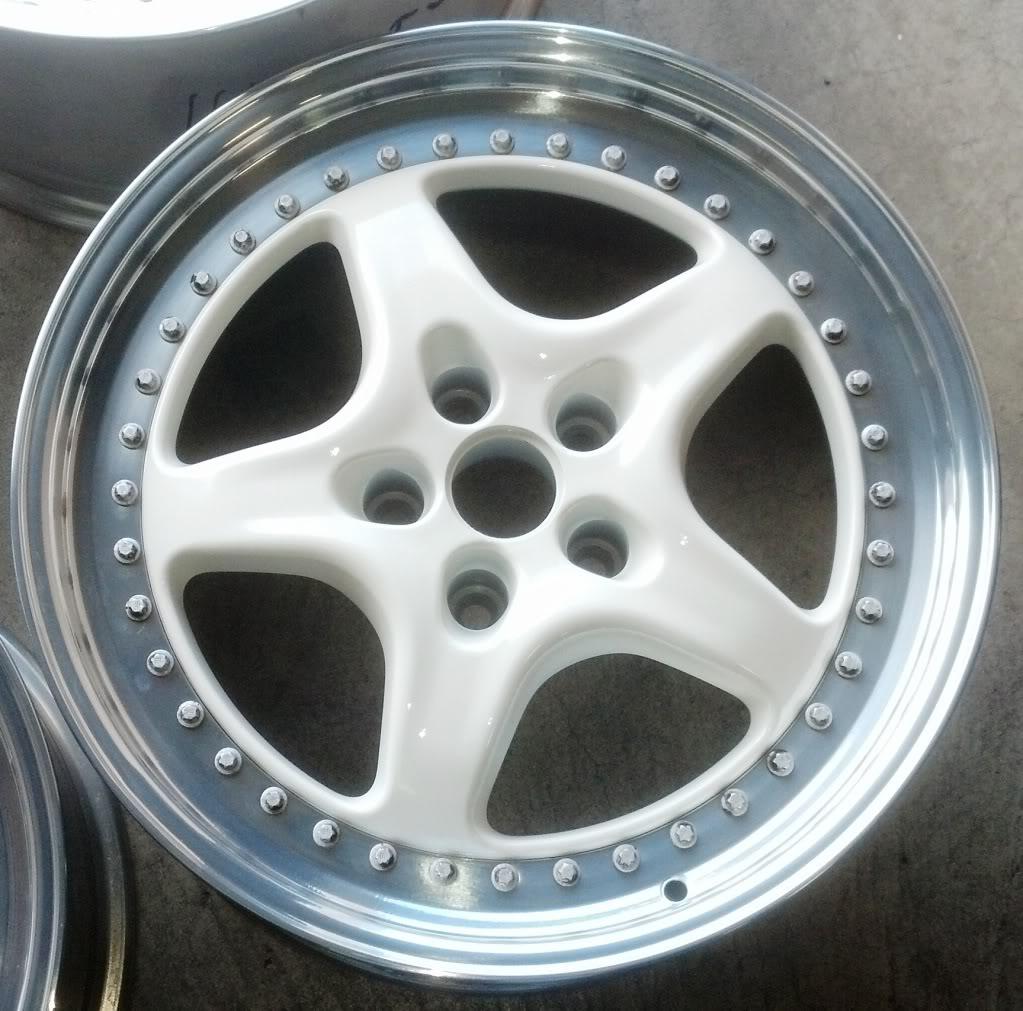
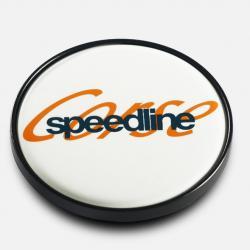
And JasonS made up some of his berber ("lux touring") over-mats for me and they're very nice. Nice product if you want mats.
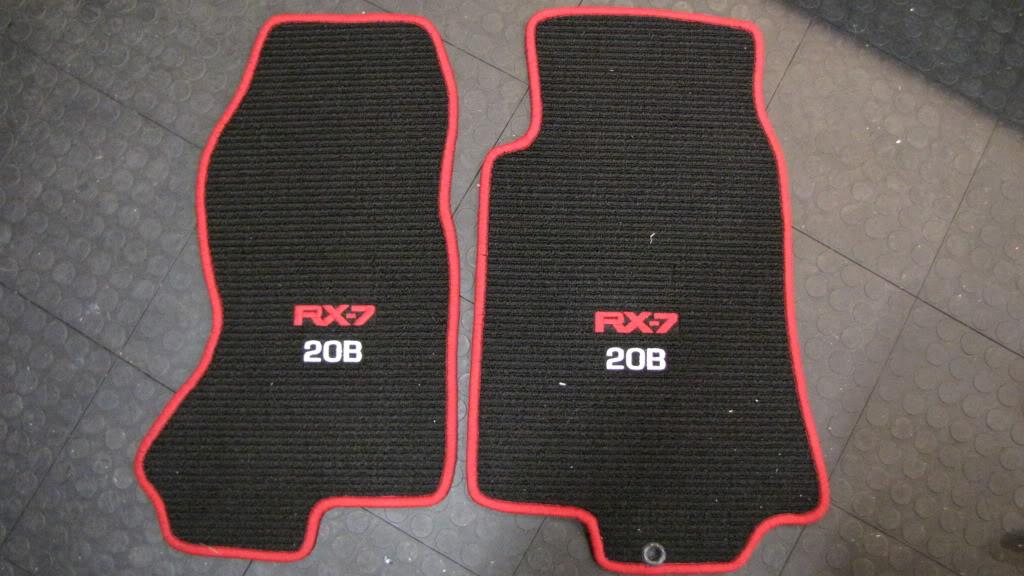
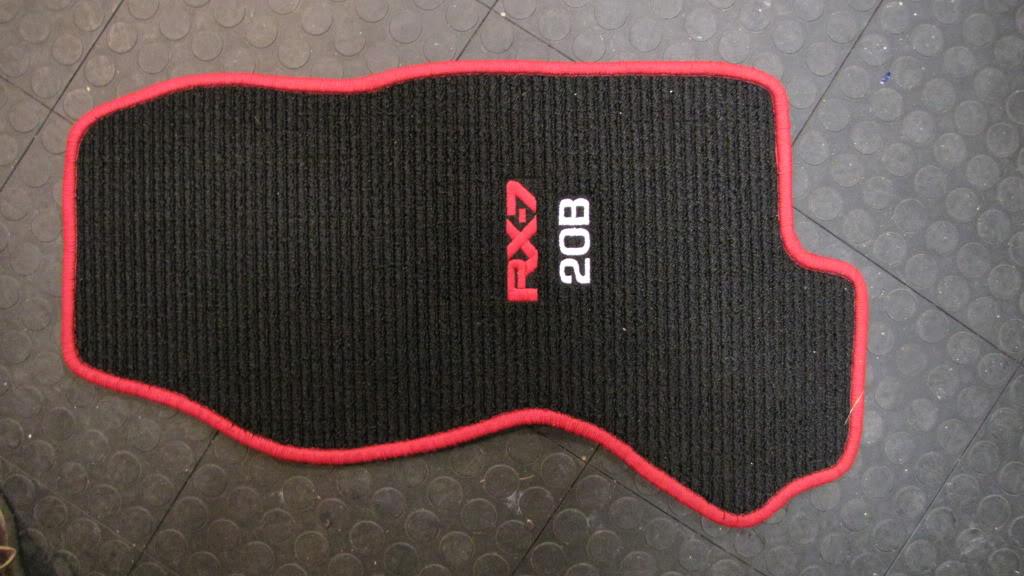

Nice job!
Posted by Diggymart on 3/13/19 @ 9:54:43 PM